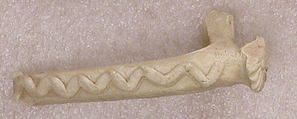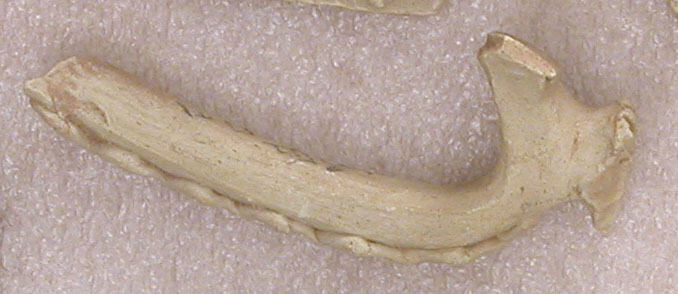Fragment of a Handle with Wavy Band and Rosette-Shaped Thumb Rest
Not on view
This ceramic fragment was excavated in Ctesiphon, the Sasanian metropolis and administrative capital conquered by Arab Muslim armies in 637. The city was known in Arabic as al-Mada’in, or "the cities", for its extended area. Arab historians indulge in describing al-Mada’in/Ctesiphon’s grand monuments, which obsessed Muslim rulers and may have acquired a symbolic meaning related to its imperial past. This was the case of the Taq-i Kisra, an impressively-sized ivan (a vaulted hall with one side open) partially dismantled to reuse its bricks in caliphal buildings in the new capital Baghdad.
Finds like this fragment, which was excavated at a site named Selman Pak III, attest to the continued occupation of Ctesiphon’s urban area in the early Islamic period. The handle would have originally belonged to a ewer. Similar features could have thumb rests in the shape of an animal or a turban, a creative practice that reached a peak in unglazed wares of the 9th to 11th centuries.
Due to rights restrictions, this image cannot be enlarged, viewed at full screen, or downloaded.
This artwork is meant to be viewed from right to left. Scroll left to view more.



